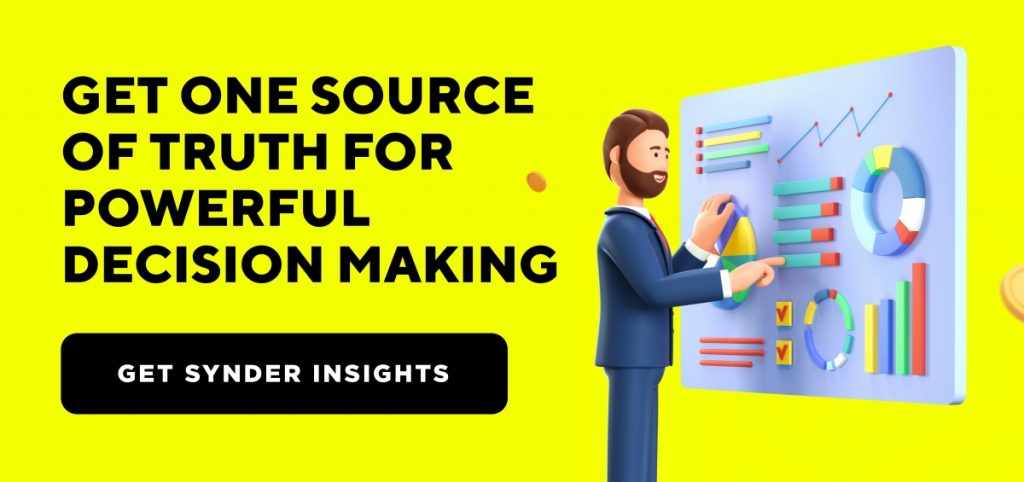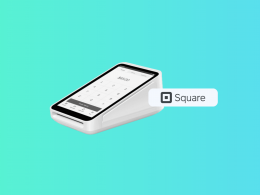When starting a new business, lots of small business owners are engrossed in creative processes of developing a unique product or service that’s going to make a splash and have a lasting impact on the market in the future. A pricing strategy doesn’t usually come first on the list of things to decide, but eventually it becomes a matter of utmost importance – competitive pricing supports your bottom line and allows your business to grow.
Small business owners looking for the best pricing strategy for their business will come across different options. It comes as no surprise that the question of choosing the best one might leave some people wondering, as there are many different pricing strategies that currently exist, new ones emerging all the time.
However, after careful analysis, it’s clear that what matters most is the type of business and its goals – just specifying that allows business owners to have a few sound options to choose from.
This article contains the most common pricing strategies with a description of what they are and which types of businesses can benefit from each one of them.
What is a pricing strategy?
The pricing strategy can be thought of as a method (or a combination of methods) used to determine what the cost for a product or service should be. It’s necessary to maximize the profits and shareholder value, while adequately understanding the market demand. Putting a great pricing strategy in action usually requires calculating the full cost, performing market research and analyzing customer insights.
Why is choosing a good pricing strategy important for my company?
We’ll state the obvious, but a good and reasonable pricing strategy is the simplest way to increase your profit margins. But that’s a cautionary tale – high price doesn’t (if at all) guarantee actual purchases and higher profits. More often than not a customer isn’t ready to pay a considerable amount of money for a product without a well-established reputation, and most small businesses sell exactly that. You’ll need time to establish trust and ensure your customers that what they’re buying is really worth what you’re asking for it.
While we’ve all heard about businesses who rip off their customers, there are also lots of small business stories that severely underprice products and services and eventually go out of business. Underpricing might seem like a good idea when you’re just starting out and want to spread the word about your products and services. But when incorporated as a stable price strategy, it’ll eat huge holes in your budget in no time.
Getting the price right and measuring up to customers’ expectations ensures that your business thrives. Getting the price wrong, however, diminishes the products’ chances for success and may eventually result in your company shutting down.
Now that you know what a pricing strategy is and why small business pricing is important, let’s dive deeper into the different types of pricing strategies.
Types of popular pricing strategies
Choosing a business pricing strategy and religiously sticking to it forever might seem like a good plan on the surface, but that’s not how it works. In reality, lots of small businesses rotate their pricing strategies over time depending on internal and external factors, or come up with their own strategy by blending some tactics that work best for them. Whatever path you choose, you’ll need to know exactly what you’re dealing with. Here’s a pricing strategy guide with the most popular pricing strategies:
1. Markup pricing (cost-plus pricing)
4. Pricing for market penetration (low first, then higher)
5. Price skimming (high first, then lower)
6. High-low pricing (Discount pricing strategy)
10. Bundle pricing
Markup pricing (Cost-plus pricing strategy)
The markup method (also called the cost-plus pricing method) is used by applying a fixed “markup” percentage to the production cost. For example, if it costs $10 to produce a shirt, you might price it at $15 if you want to make a 50% profit on each sale.
Lots of small businesses start with this strategy. At first, they calculate the full cost to produce and sell their product or service. Next, they set the price at a level that allows them to cover this cost and earn enough profit. This pricing strategy is a no-brainer for small businesses that are just starting out because it doesn’t require thorough market research or analysis.
This strategy of setting prices is typically used by businesses that sell and/or produce physical products, as well as by some restaurants. It’s one of the most often used types of pricing strategies in retail, especially in-store retail, where the markup is often higher than in e-commerce due to higher running costs. Markup is just included into the retail price.
While pricing based on cost is one of the easiest ways to determine the appropriate price for your product, it might also be quite dangerous if not done correctly.
Where it’s used: in-store retail, restaurants, manufacturing.
Want to streamline restaurant bookkeeping? Find out how Synder can help to achieve hassle free bookkeeping for restaurants.
What you should know about markup pricing
Calculating prices with this method is impossible without a clear understanding of each step in production as well as how much each step will cost. And here comes the concept of fixed and variable costs. As suggested by their names, fixed costs don’t vary, while variable costs do. For example, the rent your small business pays each month is a fixed cost, while piece-rate labor is a variable cost.
Variable costs fall under the cost of goods sold (COGS), that’s why markup pricing is basically adding a certain markup to the cost of goods sold. It’s a perfect strategy for a company producing simple products with low associated costs. However, if, for example, your company manufactures a product requiring significant research and development, you’ve got to find other ways to price it.
Hourly pricing
Hourly pricing (or rate-based pricing) is commonly used by freelancers, consultants, and other individuals who provide professional services. In a nutshell, it’s about trading your time for money. Whether and how you can use this method depends on a number of criteria, such as your qualifications, market demand, average pricing, and even your geographical location.
Some businesses and clients prefer a project-based approach, as it rewards finishing a task, rather than putting in hours. However, it’s still a very commonly used strategy that might fit your business if you provide professional services.
Where it’s used: services, nonprofits, agency work.
What you should know about hourly pricing
Hourly pricing is a pretty straightforward way to price your services – you charge an agreed price for each hour. However, there might be certain issues that you should be aware of.
Firstly, quoting your hourly rate to your customers might be problematic due to their own ideas of how much your price should be. Make sure that your customer understands what your price includes so that you can avoid awkward invoice conversations when the payments are due.
Secondly, scheduling issues enter the equation. If you charge on an hourly basis and have lots of clients, you scrupulously plan your schedule. Some customers can be surprised to find out that you can’t deal with their small problem right away or it takes you some time to respond to their requests. Clarifying such situations on the onset of your collaboration is your insurance against angry customers and bad reputation.
Thirdly, time estimates are subject to change. When a customer asks you about the time you need to fulfill the task and you give the time frame of, let’s say, 5-7 hours, they tend to assume that you’ll be able to complete it in 5 hours. Customers need to understand that depending on the circumstances, it might take 7.
Make sure that you break down these things for your customers and the price you charge is crystal clear for them. Forewarned is forearmed.
Project-based pricing
This strategy is the opposite of hourly pricing — using this approach businesses charge a flat fee instead of counting the number of hours each time a task is completed. Similar to hourly pricing, it’s also used by freelancers, contractors, consultants, and others who provide business services.
Project-based pricing is the result of estimating the number of hours a task demands, resources needed for completing it, and takes into consideration your qualifications for providing a service.
Where it’s used: services, nonprofits, agency work, construction.
What you need to know about project-based pricing
Determining the price for the whole project might be a big challenge. If your price is too low, you may end up making even less than when charging hourly. And if you price too high in comparison with the market, your chances to lose the project increase. Weigh the pros and cons of each strategy and choose what suits your small business best.
Pricing for market penetration (low first, then higher)
This strategy is one of the most popular new product pricing strategies, as it allows companies to get noticed in a new, or saturated market. It works in the beginning and helps companies draw business from less-affordable competitors, but isn’t sustainable in the long run.
It’s, however, proven to be effective if you’re just starting and seeking to attract new customers quickly. Netflix is a classic example of a company using this strategy. Remember when it used to cost under $8? We don’t either, yet we still use it, and agree to prices being slowly raised because we like the product.
By lowering your price at first, you might get a large enough base of loyal customers who will be able to get to know your product, and over time will be ready to pay more.
Where it’s used: e-commerce, online services, digital products.
Price skimming (high first, then lower)
Price skimming is the opposite of a market penetration strategy. Using this strategy, companies charge their customers a very high price for a new product and then gradually lower the price as the demand deflates. The difference between skimming and high-low pricing is that prices are lowered systematically, over a period of time.
A skimming pricing strategy can help recover production costs, but is hardly sustainable, as it quickly attracts competitors who recognize a potential for market penetration, and can upset your initial customers who paid the full price.
Where it’s used: technology (game consoles, smartphones), tourism, education.
High-low pricing (Discount pricing strategy)
Consumers enjoy discounts, but sometimes they also just need a product and will pay a reasonable price without one – that’s why this strategy works. High-low or discount pricing is used by businesses that operate on a seasonal basis. It sets a high price that gets lowered as the season draws to an end and the business needs to make space for new items.
It isn’t as upsetting to customers as a skimming strategy, as the prices go up again once the new product arrives in the new season. Those customers that need a particular product right away will pay a full price. Those that don’t mind the product slightly going out of style or simply not being in such high demand can enjoy it at a discounted rate.
Consider using this strategy if you sell clothes, furniture, decor items that depend on fashion or season. Prices may be lower, but your profits can get higher.
Where it’s used: fashion, interior design items, furniture, holiday items.
With premium pricing, businesses can afford to set high costs for their product or service because it’s unique and nobody can compete with it. If you find yourself to have a serious competitive advantage, consider this strategy.
Many customers will make a purchase because of your brand or reputation, and expect premium quality, service, packaging, and consistent marketing that promotes your brand values.
Among primary examples of businesses using this strategy is the luxury car industry, as well as the elite watch market. Prices are high in these segments, but customers still want to buy these products.
Where it’s used: luxury, high-level professional services (architecture, art, various types of personal consultancy), restaurants, education, real estate, tourism.
Competitive pricing
Competitive pricing strategy is implemented when an existing market is analyzed and a slightly lower price is offered. It’s used by many businesses who are looking to attract new customers and prepared to offer a service or sell a product consistently over a slightly lower rate than is currently available.
For example, you might open a coffee shop and set a price for coffee at $3 instead of $3.50, which is the normal rate in the area.
When choosing this strategy, it’s important to examine whether it’d be sustainable, and whether you can combine it with other strategies. One such combined pricing strategy example is Target that’s famous for selling many items at a competitive price next to those that are priced higher than usual.
Where it’s used: retail, nonprofits, real estate, education, e-commerce.
Value-based pricing
This type of pricing is built around the price the customer is willing to pay. Even if as a business owner you understand that you could afford to charge more, using this strategy, you consider customer interest and data first, and the markup you’re expecting to receive second.
It’s a great method to set a price, but it has to be used with caution and great accuracy. While it can be used long-term and build loyalty within your customer base, it requires a regular revisiting of the data you have available and a clear vision of your customer persona, as well as systematic adjustments to setting a price to what you sell.
Where it’s used: retail, e-commerce, digital services, events, restaurants, services.
Bundle pricing
A bundle pricing is used to offer more items for the price of a smaller number of products. This strategy is often used in combination with other strategies, and is especially relevant seasonally.
As a business owner you may choose to offer some products only as a part of a bundle, or create large bundles when the demand is high (5+1 for example). Studying your customer persona (for example, whether you cater to families that prefer to shop less often but buy more at once) will help you in deciding whether to implement this method of setting up prices for your products.
Where it’s used: retail, e-commerce, restaurants, beauty services.
What you need to know about bundle pricing
Check out our articles on product bundling:
What Is Product Bundling? Find the Best Product Bundling Strategy for Your Business
Product Bundling Made Easy: How to Choose and Sell Bundles in 2022
Choosing the right strategy for your small business
Finding the perfect pricing strategy for your small business isn’t an easy task. When it comes to pricing, small businesses have many things to consider, but mostly they’re based on a business’s financial standing and certain external conditions. Let’s dig deeper into the factors influencing your pricing strategy.
Knowing your product and production costs
Being aware of how much it costs to produce a product or provide a service is a must. It’s the starting point for any business regardless of the size. What are the fixed and variable costs? What’s the optimal price you need to sell your product for in order to break even? Make sure that you cover the costs, otherwise, your business won’t last long.
Keeping tabs on the said production costs
Start monitoring production costs as they’re subject to change. If there’s an increase in the price for one tiny detail, packaging or shipping cost, it has to be accounted for in your prices. While you might feel little to no impact right away, neglecting these fluctuations can lead to difficulties in maintaining long-term profitability.
Knowing your customers
You need to know who your customers are and what they really want. What makes them buy your product? Why do they choose your products over your competitors’ products? Is there a way to increase the amount of money they’re willing to spend? Answering these and many other questions about your customers will help you come up with better offerings and consequently receive higher profit. Just do your customer research before you start setting up your prices.
Keeping a pulse on the industry and adjusting product pricing strategies accordingly
Knowing what your competition is charging for the same or similar products and services is just the tip of an iceberg. Keep up with the emerging trends, try to stay on top of possible threats in order to prevent problems even before they appear – this way you’ll have a chance to beat your competitors. Prices may vary but if your products are adjusted to the new demands from your customers, you’ll start seeing better results.
Using the right tool
While it might feel like a juggling act, choosing the right pricing strategy can be simplified with smart software that’ll save you lots of money and man-hours. With many tools available on the market, making the right choice is difficult. Typically, small businesses end up with multiple tools tracking various KPIs, but is it the only option? Synder Insights might be just what your real small business needs.
How Synder can help businesses
Synder Insights is a powerful tool that provides you with actionable insights into your business’s performance and lets you make measured steps towards adopting optimal pricing.
With Synder, you get access to a set of instantly generated reports based on the data captured from connected e-commerce platforms and payment gateways. You can break down your sales, products, customers, payment processing fees, etc. and display the data filtering it the way you need.
Wondering which products matter the most for your sales? Read the top-performing products report and diversify your product offerings. Want to identify products that require more attention and can potentially increase sales? Try the least-performing products report which is based on the sales information from all connected channels.
Want to know more about your customers? Learn who your new and returning customers are and who your top-performing and least-performing customers are. Display the data by the total amount of money a customer brought you or the number of purchases they made, track their performance over time and understand patterns in their behavior per each sales channel or in general.
Concerned that you’re spending too much and don’t know where your money is going? Check out the payment processing fees report which breaks down the fees charged by each connected payment processor to have a clear picture of your expenses.
These are just some of the KPIs you can make use of with Synder Insights. This variety of data snapshots provides e-commerce businesses regardless of size with loads of valuable insights for better management and faster growth. With Synder Insights, you can make decisions (including prices) based on accurate real-time data. Give the tool a try by signing up for a free trial or book a demo to get a guided tour!
Final words on pricing strategies
Deciding on the best pricing strategy for your small business depends on many factors, among which the chief one is understanding the market, your goals, and your customer persona. By regularly revisiting your chosen strategies and adjusting them according to new data, you can make sure that you’re staying on top of the game. Reduce the stress of gathering data to come up with optimal prices for your products or services by picking the right automation tool. Why spend hours on research when everything can be done in a matter of seconds?








Great insights on various pricing strategies! I appreciate the breakdown of these strategies and their applications for small businesses. One aspect that could add depth to this discussion is exploring dynamic pricing, where prices change based on market demand or other factors. Have you seen businesses successfully implement dynamic pricing strategies? How do you think such strategies can impact small businesses, especially in competitive markets?
Thank you for your positive feedback and for bringing up dynamic pricing – it’s indeed a fascinating aspect of pricing strategy. Some businesses successfully implement dynamic pricing, particularly in sectors like hospitality, travel, and online retail. This strategy involves adjusting prices in real-time based on factors like demand, competition, customer behavior, and market conditions. While dynamic pricing can be a powerful tool, it’s important for small businesses to approach it carefully to maintain customer trust and loyalty, as frequent price changes can sometimes confuse or frustrate customers. A balanced approach, combining dynamic pricing with a strong value proposition, can make this strategy a beneficial addition to a small business’s pricing toolkit.